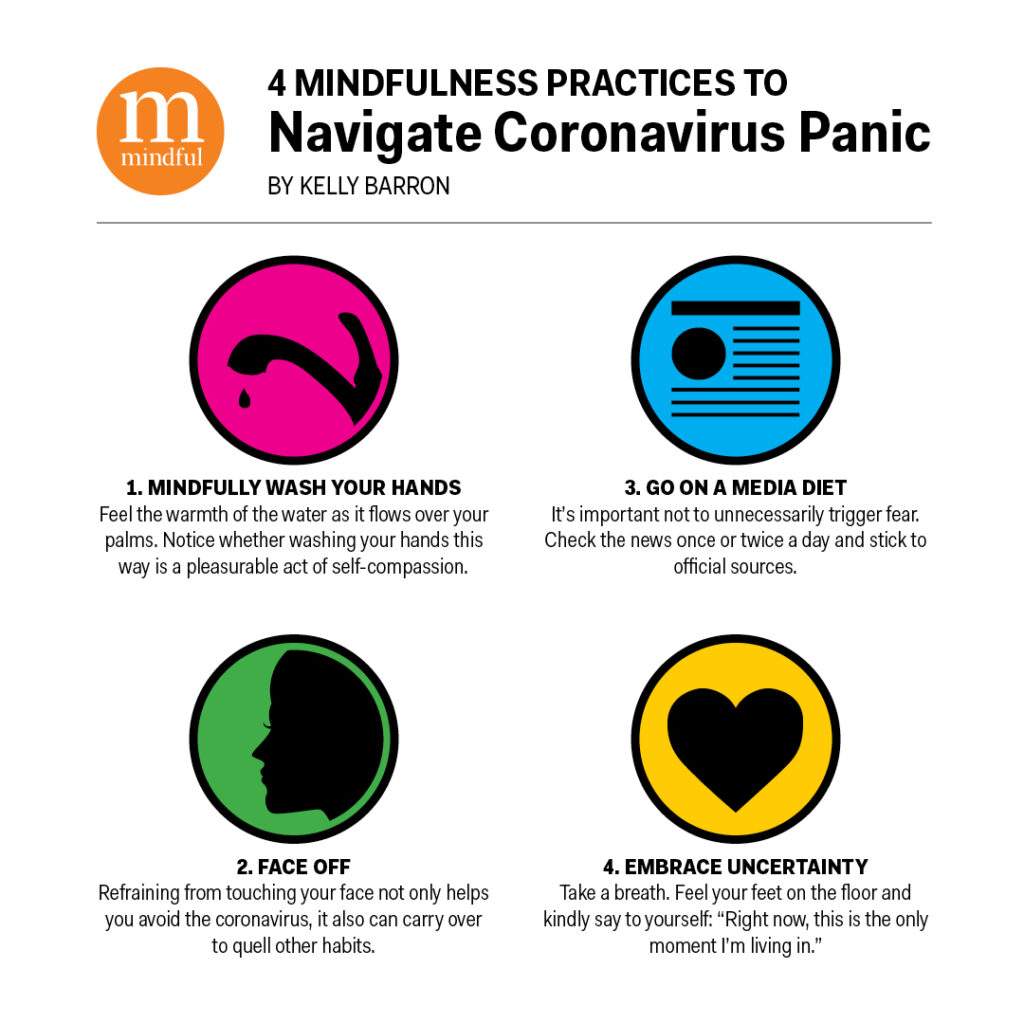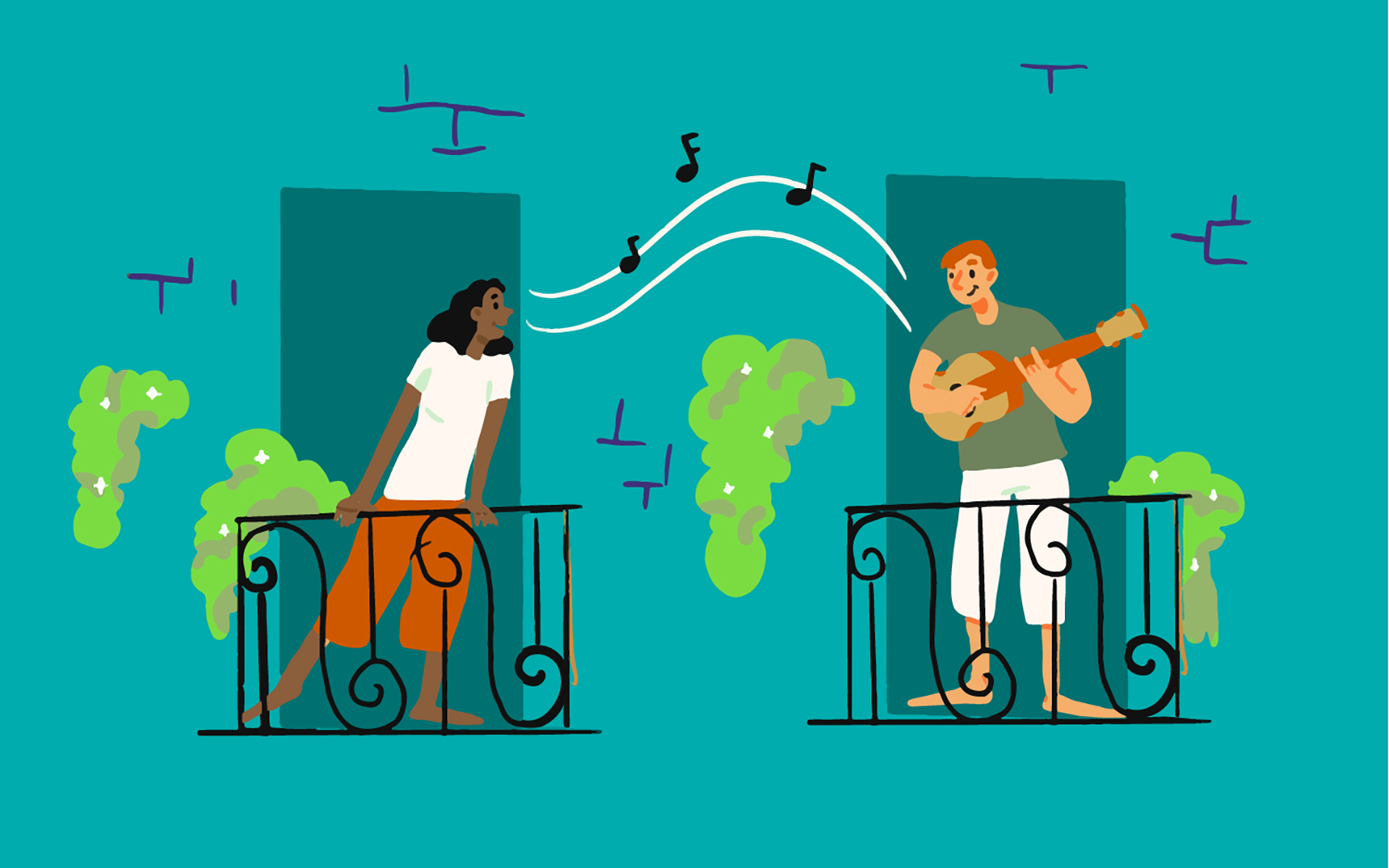Each day, headlines bring news of the coronavirus and the actions people are taking to not get sick. Schools and offices are closing. Travel plans and conferences are getting canceled. There’s been a run on everything from black beans to toilet paper. The stock market is a roller coaster.
As frightening as the virus, is the uncertainty it’s causing. Amid the fear and uncertainty, I’m reminded of why I practice mindfulness.
A fellow meditation teacher recently encouraged her students to check inside and see what all the fear and uncertainty is stirring up. You’ve been training for this, she told them, and now it’s time to use your practice. That’s wise advice, and will remain so as the COVID-19 situation evolves in the days, weeks and likely months ahead.
Sometimes we think of mindfulness as fluffy and soft. But mindfulness is built for difficulty. It’s like a Hummer without the gas guzzling, capable of traveling over rough terrain while keeping its occupants above ground.
Investigating fear with mindfulness
Lately, I’ve been mindful of the one-to-one correlation between the news I’ve been reading and my own reactivity. Some of it is prompting prudence. I bought a bottle of 409 All Purpose antibacterial cleaner—just in case.
But when I felt apprehensive about going to the gym for a workout, I paused and felt my fear—the heat in my chest, the racing thoughts, and the images of me getting sick. I went to the gym, washing my hands carefully before coming home.
If we’re not mindful of our fear, it will overwhelm us and that’s rarely a good thing. When we face something threatening such as a fast-moving virus, it’s normal to be afraid. This sort of thing is like catnip for our brains, which are hardwired to scan for danger. Reading blaring headlines or watching alarming news about the coronavirus plays into our nature, and not in a good way.
If we’re not mindful of our fear, it will overwhelm us and that’s rarely a good thing.
We can bring mindfulness into the fray to settle our nerves. And we can notice whether binging TV news invites a wise response to forgo a family reunion in a coronavirus hotspot like Seattle or if it’s stirring panic, urging us to line up at Costco before the doors open to buy jumbo rolls of Quilted Northern just in case the end is near, and the only solution is lots and lots (and lots!) of toilet paper.
Whenever fear arises—whether triggered by a mysterious virus or not—we can stop and investigate it. We can learn to see it not as a monolithic feeling, but as a fleeting experience with movable parts—sensations, thoughts, images and so on.
In doing so, we can become intimate with the patterns of our personal brand of fear. We can notice where somatic angst shows up in our body. We can listen to the speed and content of our mental chatter. We can watch images appear in the theater of our mind and more clearly see the story that’s projected.
When fear is mindfully broken down in this way, it becomes workable. It can even wisely inform our next steps. Feeling into the discomfort of uncertainty can birth new perspectives, and having the mental flexibility to consider another option creates an island of safety in the midst of uncertainty.
Mindfulness and the coronavirus
There’s also something wholeheartedly practical about mindfulness and its power to combat a pernicious virus.
We can notice, for example, how often we touch our face. This is something we apparently do more than 20 times an hour and is a sure-fire way to catch a virus, as our hands can pick up coronavirus from hard surfaces and transfer it to our eyes, nose, or mouth. We can make a practice of not touching our face. We also can wash our hands more frequently, noticing the sensations of the warm water and the slippery soap.
Instead of shaking each other’s hands, we can look each other in the eye and send loving-kindness—wishing each other health, safety and peace.
Instead of shaking each other’s hands, we can look each other in the eye and send loving-kindness—wishing each other health, safety and peace. That’s the soft side of mindfulness. And it works in tough times, too. In fact, in stressful times it’s worth leaning into the compassionate side of mindfulness. It’s worth remembering our shared humanity. And it’s particularly worth paying attention to the biases, judgments, and condemnations that arise from fear and separate us from each other.
In many ways, COVID-19 has shown us just how connected and how much the same we really are. All of us—and some of us more than others—are vulnerable to getting sick and none of us wants to become ill. Viewed through the lens of interconnectedness, practicing mindfulness as the coronavirus spreads is not only a way to care for ourselves but a way to care for everyone around us.

Read more
3 Ways to Nurture the Positive in Difficult Times
Connecting to good feelings keeps our hearts afloat and gives us hope. Here are three embodied mindfulness practices to welcome gratitude and amusement.
Read More
What Swimming Taught Me About Self-Compassion and Letting Go
Finding “easy speed” in the pool helped writer and meditation teacher Kelly Barron heal the wound of overachieving and stay loose in the face of resistance.
Read More










